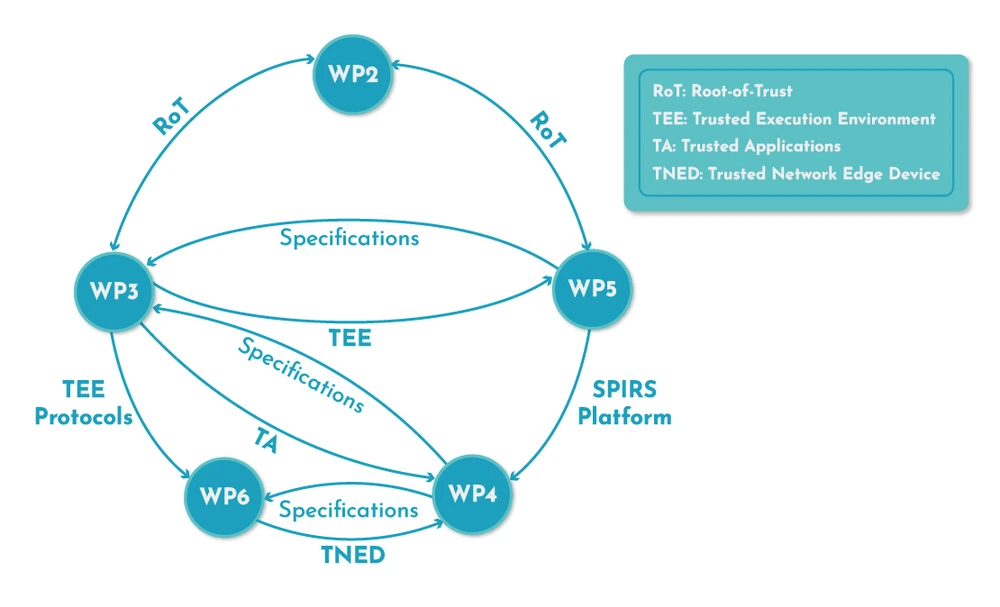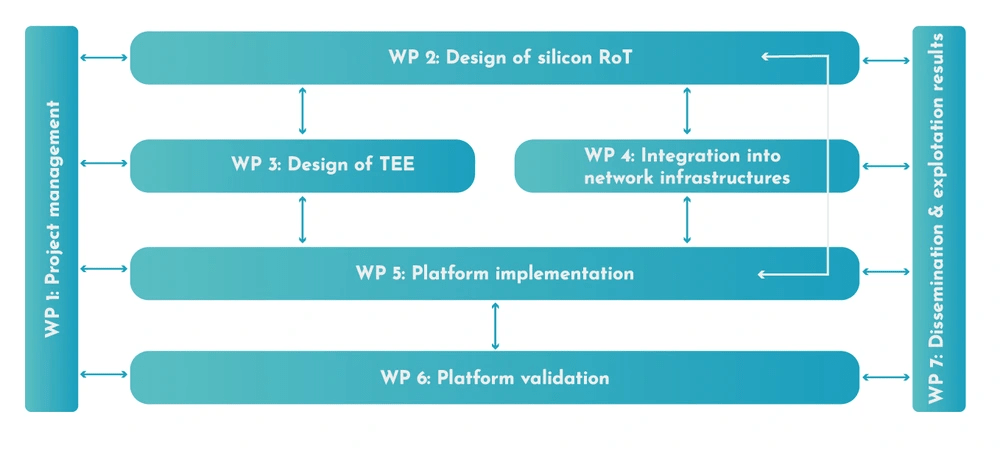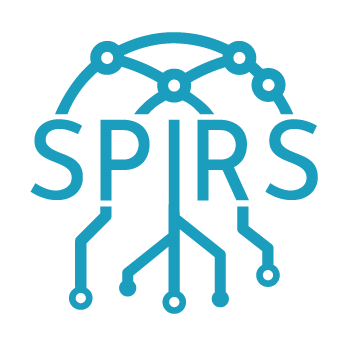The SPIRS project targets a step-by-step development of the methodology and contains five research work packages (WPs). The WPs are organized in such a way to eliminate bottlenecks and minimize risks. The main steps are:
1. Design of a RoT suitable for building secure execution environments, protocols, and integration into network infrastructures. This step is the base to build the rest of components (WP2).
2. Development of secure booting mechanisms using the RoT and TEE to build high-level protocols supporting privacy enhancement, and remote attestation protocols (WP3).
3. Development of security and privacy mechanisms for network access (WP4) using RoT and TEE (WP2 and WP3).
4. Implementation of a RISC-V-based processor bridging the hardware world (WP2) and software world (WP3). This RISC-V needs to be secured according to target of security (WP5). This platform implementation will consist of two phases: FPGA prototypes (first phase), and evaluation of building blocks in VLSI integration (second phase).
5. Validation of the whole SPIRS platform in the case studies, to have the best possible benchmark for all the results of the project (WP6). The scenarios incorporate end-users and provide real solutions in a pre-exploitation phase for industry.
The following Pert-like diagram the interdependencies among scientific work packages. The bidirectional arrows indicate feedback or valuable information interchange between two different work packages. WP2 provides RoT to build TEE (WP3) and SPIRS platform (WP5). WP3 provides TEE and high-level protocols taking into consideration the specifications of study cases and hardware specifications of the RISC-V-based processor core. WP4 is fed with TEE and protocols from (WP3) and specifications from study cases, delivering TNED. The validation of study cases in WP6 requires the SPIRS platform (WP5), TA (WP6) and TNED.

Each work package has a direct relationship with one of the specific objectives of SPIRS:
WP2 → Objective 1
WP3 → Objective 2
WP4 → Objective 3
WP5 → Objective 4
WP6 → Objective 5
Since SPIRS considers dissemination and exploitation of the project results to the scientific community and industry of high importance, a separate work package (WP7) is defined for taking care of these tasks. WP1 will take care of the overall project management.



